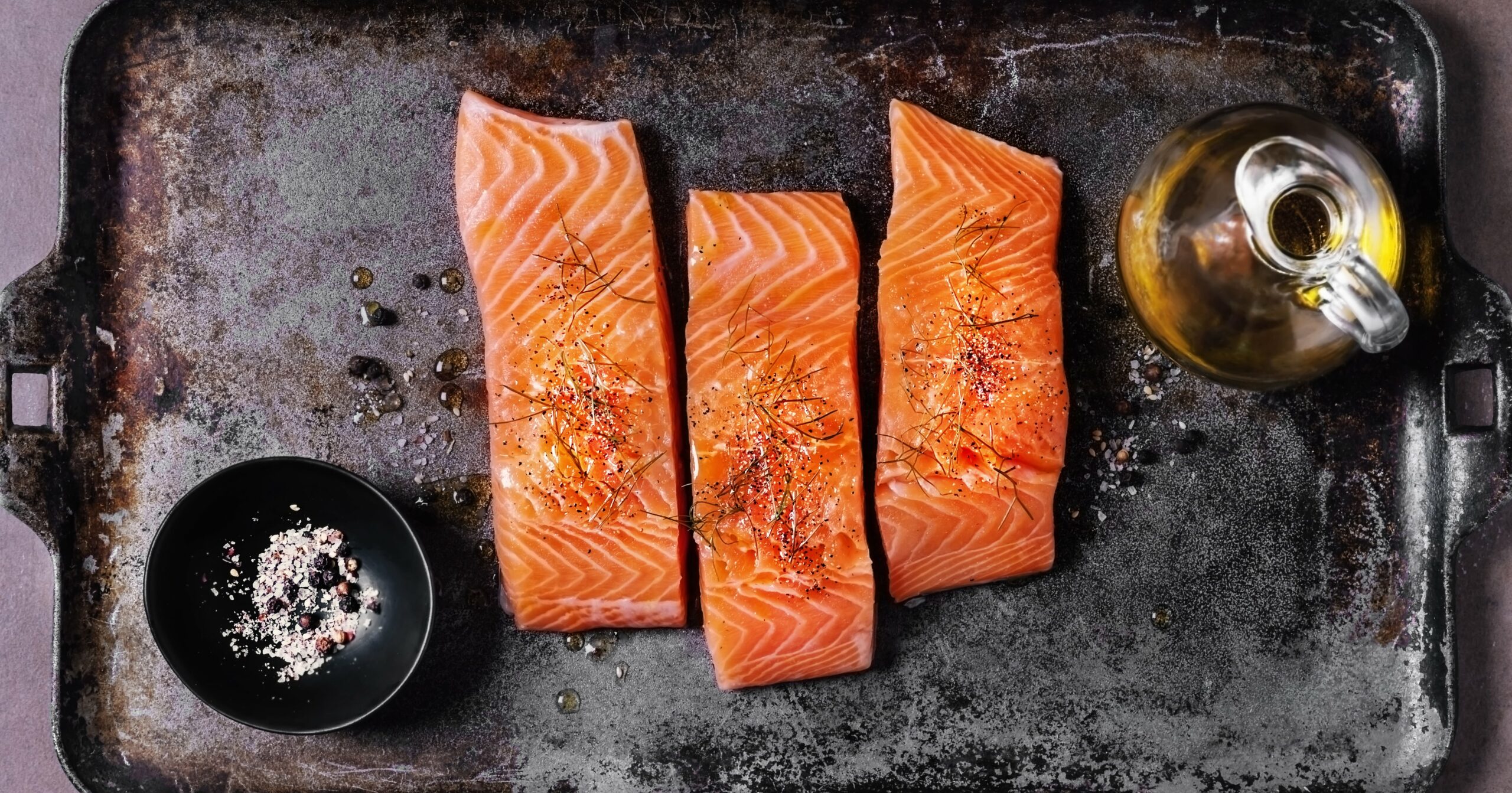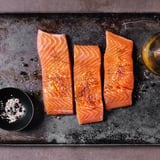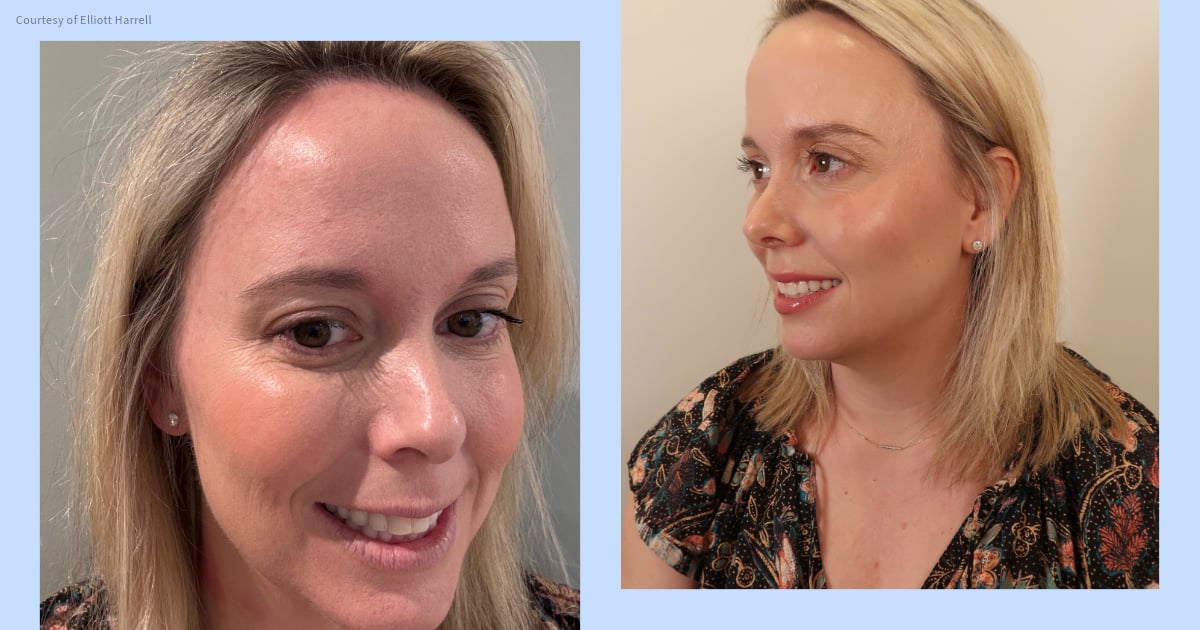Thanks to its neutral flavor, salmon is a star in any meal. Breakfast? Salmon and eggs. Lunch? Leafy greens with salmon on top. Dinner? Grilled fillet with a side of brown rice and sautéed veggies. You get what I mean: it’s extremely versatile. It’s also widely available and relatively accessible in terms of price. In fact, when you start listing out the benefits of salmon, you might start thinking the fish is too good to be true. Could it really be that salmon is good for you, too? But the answer is yes – in fact, it’s a nutritional MVP.
“Salmon is one of my favorite foods to recommend because of its many nutritional benefits,” says Stacey Simon, RDN, of Top Nutrition Coaching. “It’s a really wonderful, healthy option to promote heart, brain, and reproductive health.”
Plus, salmon is a fatty fish. Fat has been demonized by diet culture, which may be one reason people ask, “Is salmon healthy, really?” But fat isn’t inherently bad, and salmon is a great source of omega-3 fatty acids, which are needed for proper immune functioning. These healthy fats also minimize the risk of cancer, support fetal development, and reduce inflammation in the body, Simon adds.
Not yet convinced of the major health benefits of salmon? Keep reading for everything you need to know about this fan favorite, according to a registered dietitian.
Experts Featured in This Article
Stacey Simon, RDN, of Top Nutrition Coaching.
What Are the Health Benefits of Salmon?
Salmon is a great source of healthy fats, vitamins, and minerals, and as a result, it’s packed with nutritional benefits. Nutrition varies slightly between wild and farm-raised salmon, but both options are high in protein, B vitamins, and selenium, Simon says. “Protein is so important, because we need it for maintaining muscle mass, energy levels, and immune function,” Simon explains. “B vitamins can play a role in our energy level, and selenium [impacts] our immune function.” It’s also loaded with omega-3 fatty acids, which reduce inflammation and improve heart health, Simon adds.
Does Salmon Have Protein?
Salmon is an excellent source of lean protein, with a three-ounce raw fillet providing about 17 grams of protein, Simon says.
While how much protein you need is relatively individualized – factors such as age, activity level, and medical conditions make a difference – on average women need around 0.8 to 1 gram of protein per kilogram of body weight, Simon says. For a 150-pound person, that could come to about 54 to 75 grams of protein daily. So if you have a serving of salmon for breakfast, lunch, or dinner, with another high-protein food like eggs, chickpeas, or pistachios, you’ve made a serious dent in your daily protein recommendations.
In terms of wild versus farmed-raised salmon, protein content is relatively comparable, and both are great options.
Does Salmon Have Mercury?
Besides the fat, one other factor that makes people wonder if salmon really is good for you is the mercury levels. Mercury poisoning affects the nervous system and kidneys, notes Cleveland Clinic, and can be dangerous. But salmon is a fairly low-mercury fish and is considered a “best choice” when it comes to fish options with regard to mercury levels, according to the Food and Drug Administration (FDA).
That said, if you are pregnant, always consult with your doctor before consuming salmon (or any seafood) to discuss your nutritional needs and individual limits, stresses Simon. Your doctor may be on board, but you still want to get specific recommendations. “The omega-3s in salmon are necessary for a baby’s brain health and development, so salmon can be included in a healthy pregnancy diet at about four ounces, two to three times weekly,” Simon says. “I recommend that pregnant women make sure their salmon is fully cooked to minimize the risk of food-borne illness.”
Is Salmon Skin Healthy?
Salmon skin is full of vitamins and minerals, but it can be a leading source of chemicals called PCBs (polychlorinated biphenyls), Simon cautions. These chemicals accumulate in the skin and fatty areas of the fish (the layer of gray right next to the skin), and if consumed in large quantities, they can have adverse health outcomes such as cognitive deficits and impaired brain development in children, and negative effects on the immune, endocrine, and reproductive systems. Because of this, Simon recommends removing the skin before eating, especially if the salmon is farm raised, which is found to be higher in PCBs.
If you love the extra crispiness the skin provides, consuming it every once in a while is OK because PCBs are not considered “highly toxic in a single dose,” per the Environmental Defense Fund. But if salmon is a frequent meal for you, Simon recommends removing the skin and grilling or air frying your salmon to get a similar crispiness without the risk.
Is Salmon “Too Fatty”?
Absolutely not! “The fats we find in salmon are healthy omega-3 fatty acids like EPA (eicosapentaenoic acid) and DHA (docosahexaenoic acid), which have been shown to improve health,” Simon says. “These healthy fats can improve our heart, brain, and reproductive health, so getting plenty of omega-3s in our diet is a good thing.” These fats are also anti-inflammatories and known to reduce inflammation in the body, she adds.
Not to mention, the American Heart Association recommends consuming a serving of 3.5 ounces of fish at least twice a week.
Is Salmon Good For You?
No surprises here – the answer is yes, salmon is good for you, for about a dozen different reasons. “Salmon is a wonderful source of protein, healthy fat, vitamins, and minerals, and it’s versatile, quick, and easy to prepare,” Simon says.
“The one caution I share is smoked salmon, because while still a great source of omega-3s and protein, it is generally very high in sodium.” So if you’re trying to be mindful of sodium intake, opt for “no salt added” lox or canned salmon, or choose fresh or frozen fillets if accessible.
Andi Breitowich is a Chicago-based freelance writer and graduate from Emory University and Northwestern University’s Medill School of Journalism. Her work has appeared in PS, Women’s Health, Cosmopolitan, and elsewhere.




